Abstract
OBJECTIVE--To develop a questionnaire to evaluate patients' knowledge of anticoagulation. DESIGN--Anonymous self completed questionnaire study based on hospital anticoagulant guidelines. SETTING--Anticoagulant clinic in a 580 bed district general hospital in London. SUBJECTS--70 consecutive patients newly referred to the anticoagulant clinic over six months. MAIN MEASURES--Information received by patients on six items of anticoagulation counselling (mode of action of warfarin, adverse effects of over or under anticoagulation, drugs to avoid, action if bleeding or bruising occurs, and alcohol consumption), the source of such information, and patients' knowledge about anticoagulation. RESULTS--Of the recruits, 36 (51%) were male; 38(54%) were aged below 46 years, 22(31%) 46-60, and 10(14%) over 75. 50 (71%) questionnaires were returned. In all, 40 respondents spoke English at home and six another language. Most patients reported being clearly advised on five of the six items, but knowledge about anticoagulation was poor. Few patients could correctly identify adverse conditions associated with poor control of anticoagulation: bleeding was identified by only 30(60%), bruising by 23(56%), and thrombosis by 18(36%). Only 26(52%) patients could identify an excessive level of alcohol consumption, and only seven (14%) could identify three or more self prescribed agents which may interfere with warfarin. CONCLUSION--The questionnaire provided a simple method of determining patients' knowledge of anticoagulation, and its results indicated that this requires improvement. IMPLICATIONS--Patients' responses suggested that advice was not always given by medical staff, and use of counselling checklists is recommended. Reinforcement of advice by non-medical counsellors and with educational guides such as posters or leaflets should be considered. Such initiatives are currently being evaluated in a repeat survey.
Full text
PDF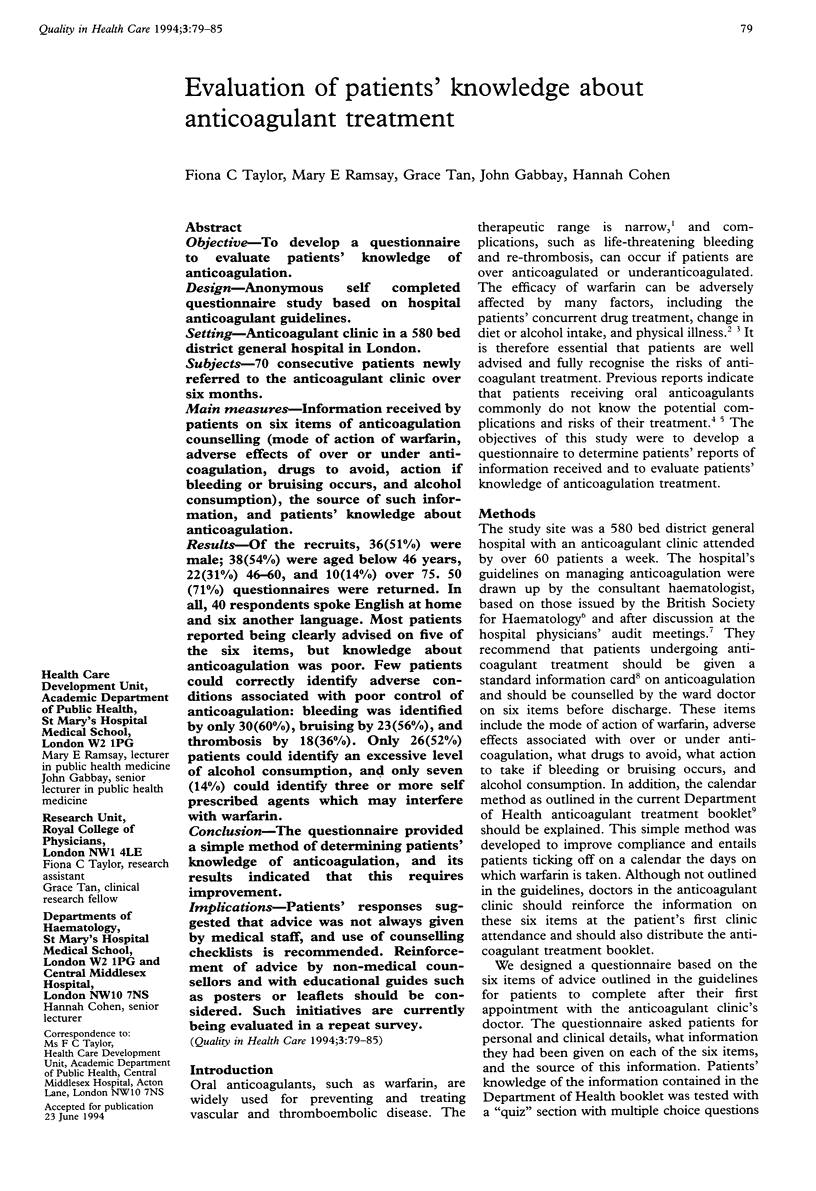
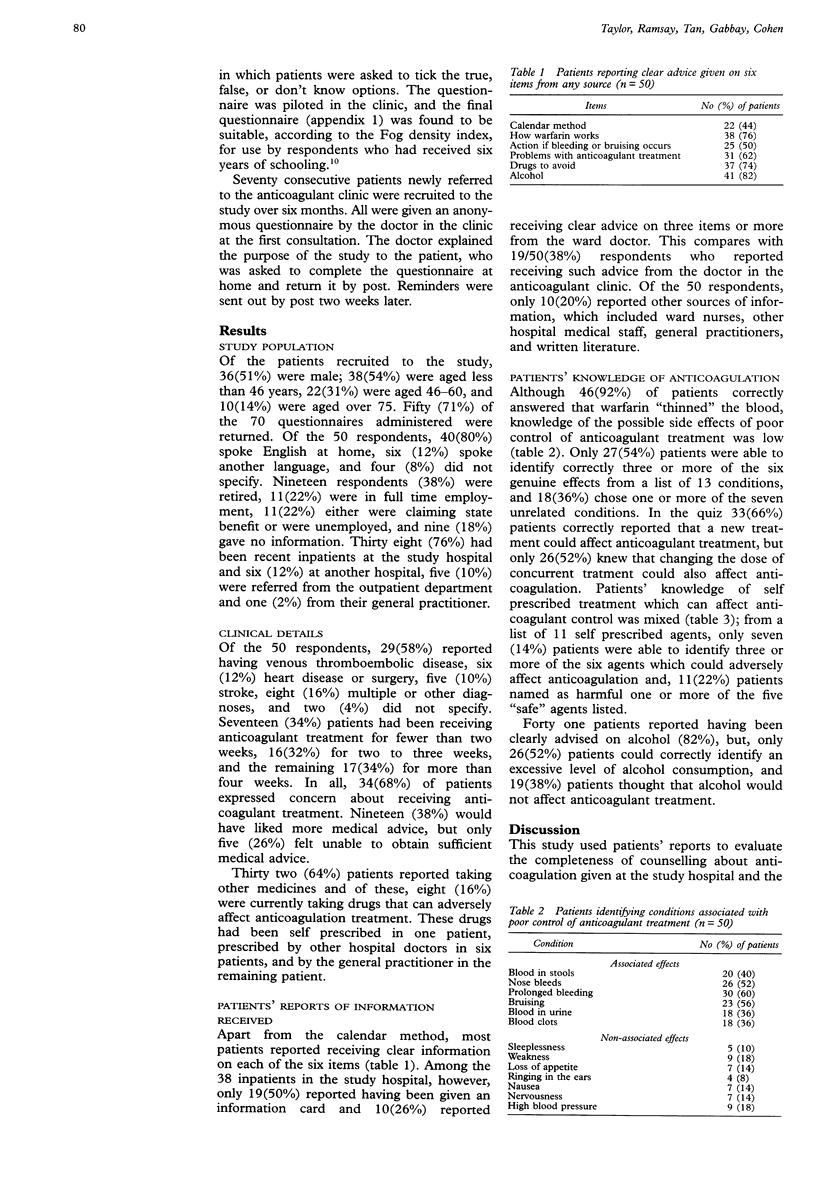
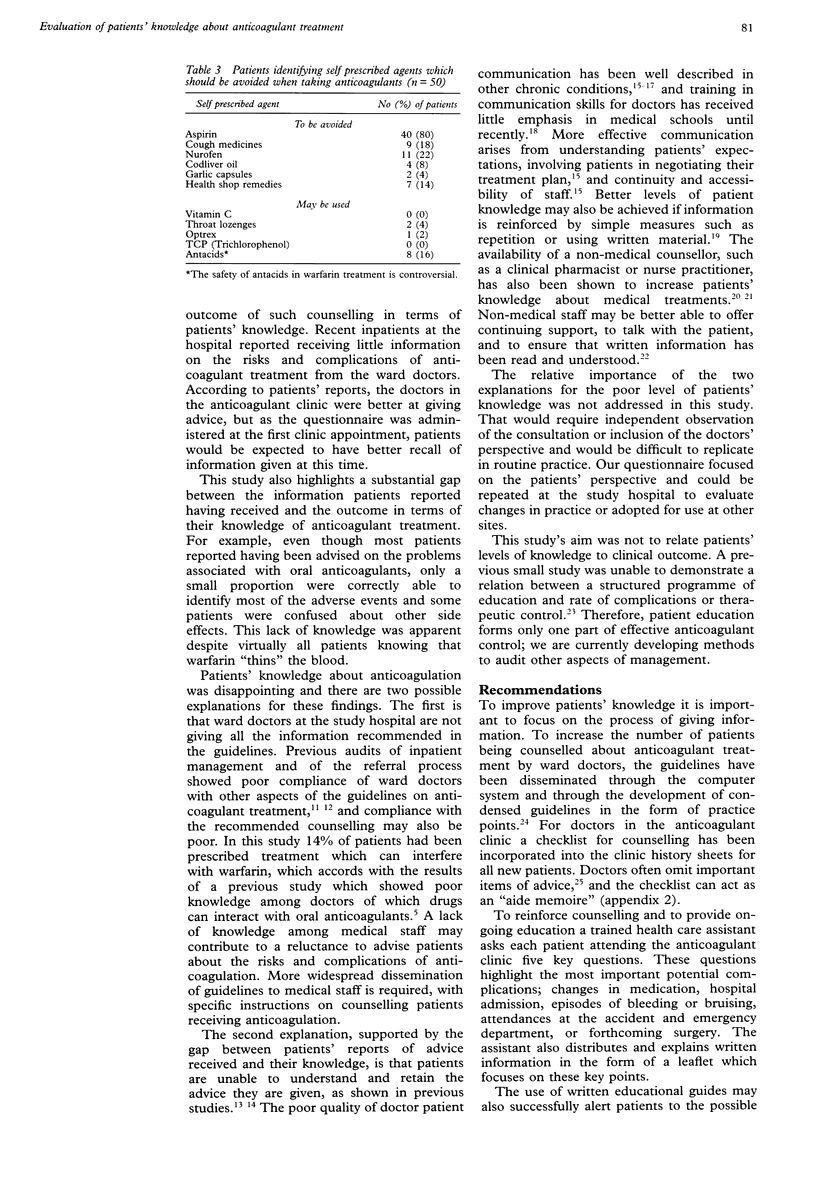
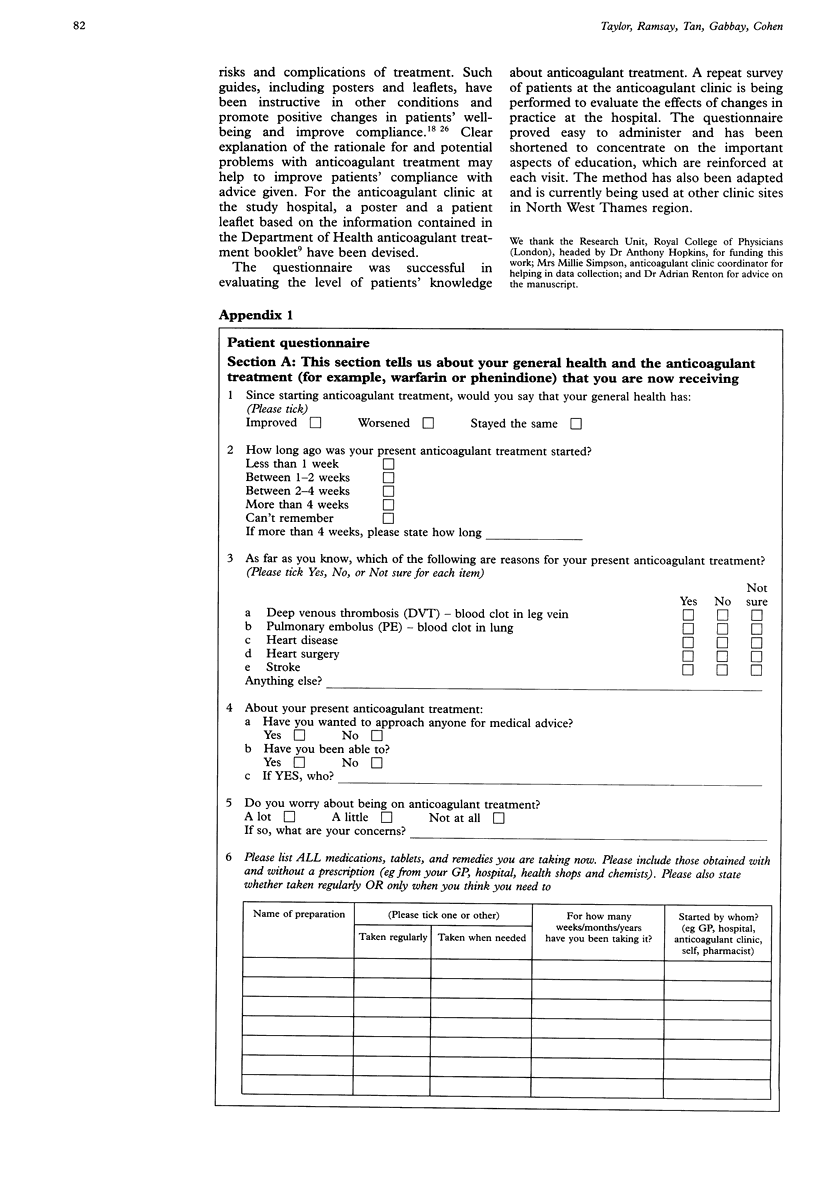
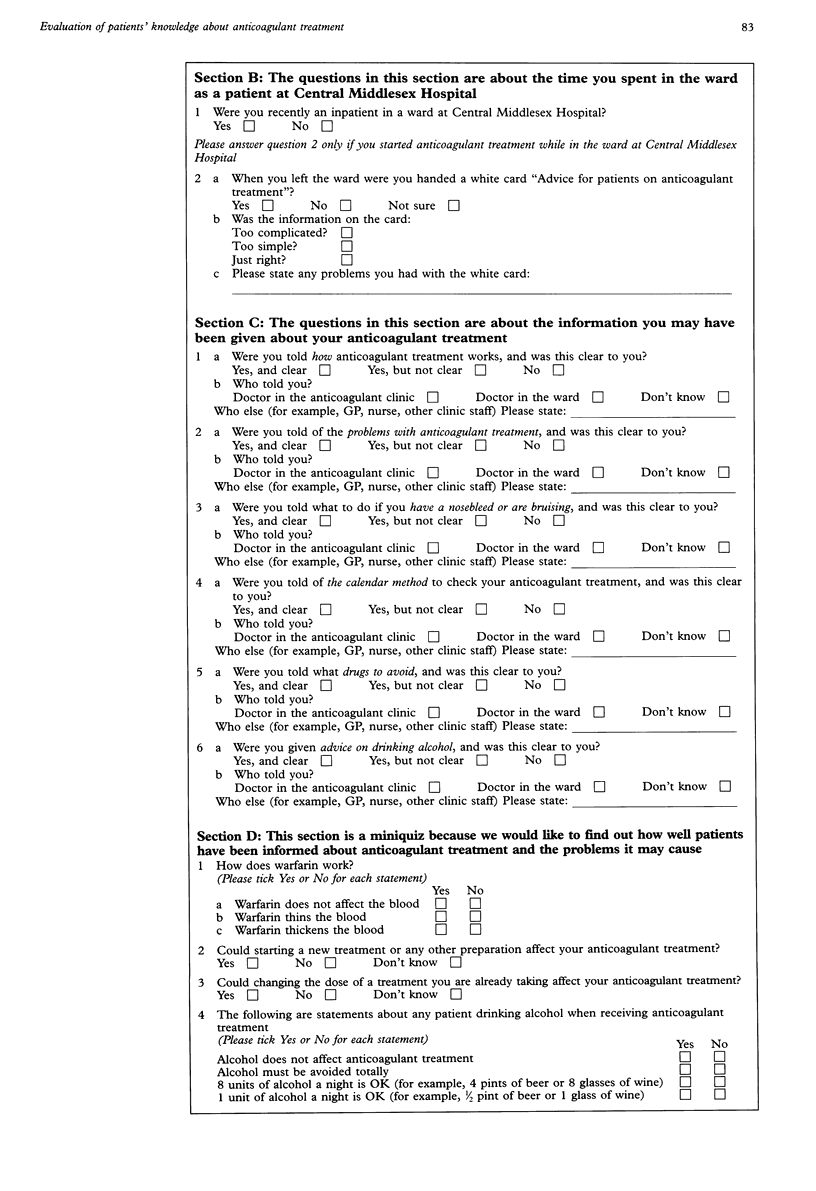
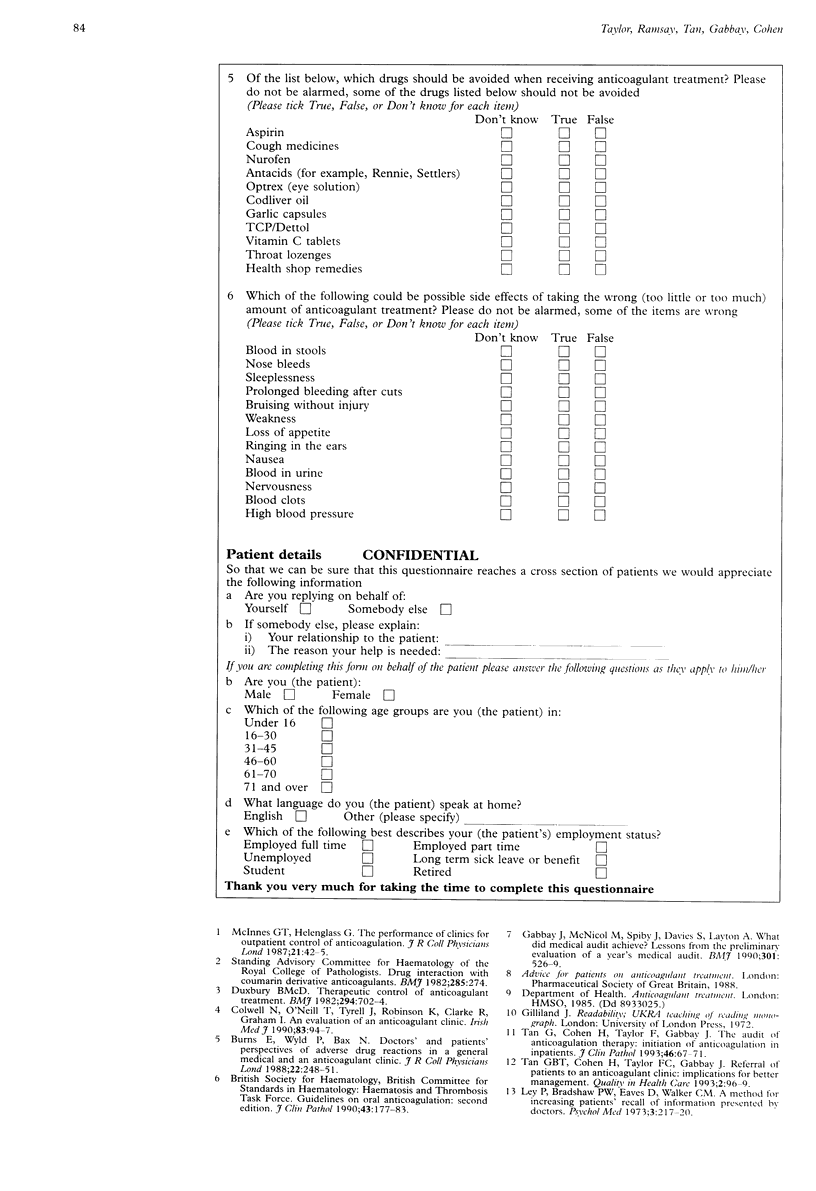
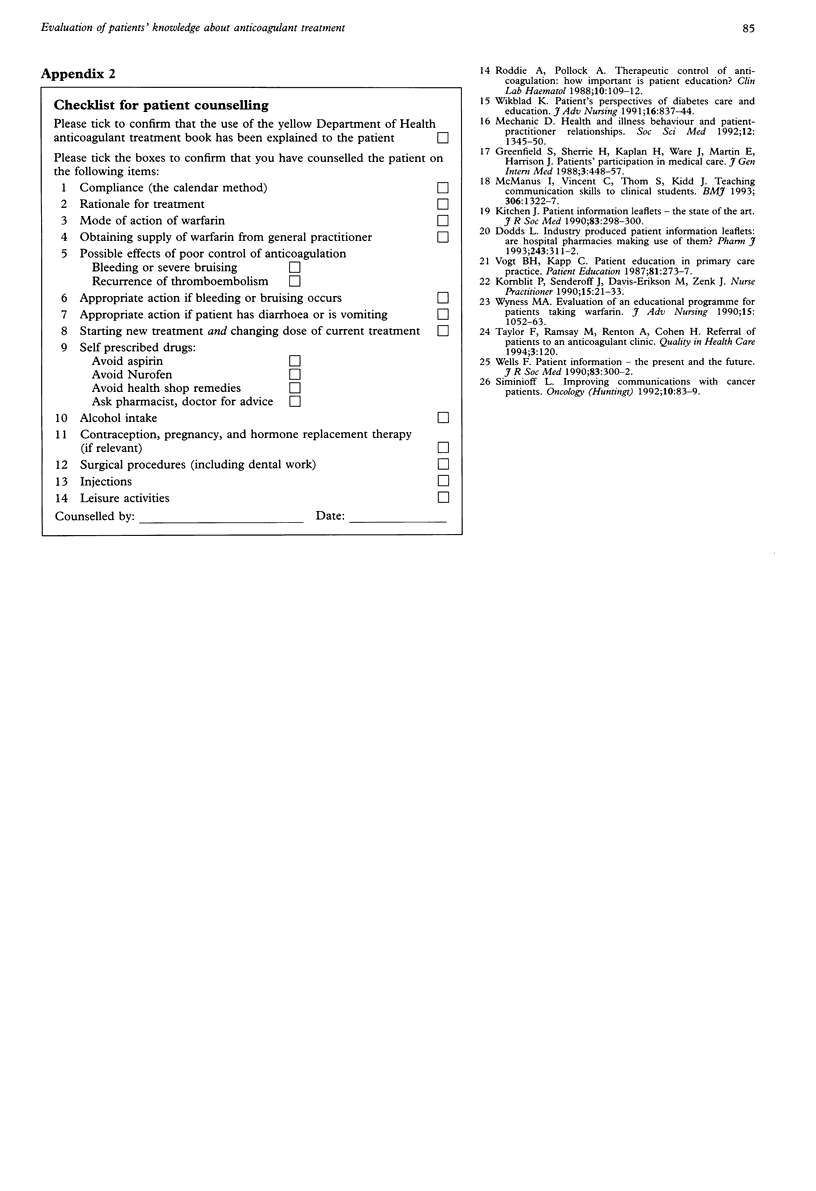
Selected References
These references are in PubMed. This may not be the complete list of references from this article.
- Burns E., Wyld P. J., Bax N. D. Doctors' and patients' perceptions of adverse drug reactions in a general medical and an anticoagulant clinic. J R Coll Physicians Lond. 1988 Oct;22(4):248–251. [PMC free article] [PubMed] [Google Scholar]
- Duxbury B. M. Therapeutic control of anticoagulant treatment. Br Med J (Clin Res Ed) 1982 Mar 6;284(6317):702–704. doi: 10.1136/bmj.284.6317.702. [DOI] [PMC free article] [PubMed] [Google Scholar]
- Gabbay J., McNicol M. C., Spiby J., Davies S. C., Layton A. J. What did audit achieve? Lessons from preliminary evaluation of a year's medical audit. BMJ. 1990 Sep 15;301(6751):526–529. doi: 10.1136/bmj.301.6751.526. [DOI] [PMC free article] [PubMed] [Google Scholar]
- Greenfield S., Kaplan S. H., Ware J. E., Jr, Yano E. M., Frank H. J. Patients' participation in medical care: effects on blood sugar control and quality of life in diabetes. J Gen Intern Med. 1988 Sep-Oct;3(5):448–457. doi: 10.1007/BF02595921. [DOI] [PubMed] [Google Scholar]
- Kitching J. B. Patient information leaflets--the state of the art. J R Soc Med. 1990 May;83(5):298–300. doi: 10.1177/014107689008300506. [DOI] [PMC free article] [PubMed] [Google Scholar]
- Ley P., Bradshaw P. W., Eaves D., Walker C. M. A method for increasing patients' recall of information presented by doctors. Psychol Med. 1973 May;3(2):217–220. doi: 10.1017/s0033291700048558. [DOI] [PubMed] [Google Scholar]
- McManus I. C., Vincent C. A., Thom S., Kidd J. Teaching communication skills to clinical students. BMJ. 1993 May 15;306(6888):1322–1327. doi: 10.1136/bmj.306.6888.1322. [DOI] [PMC free article] [PubMed] [Google Scholar]
- Mechanic D. Health and illness behavior and patient-practitioner relationships. Soc Sci Med. 1992 Jun;34(12):1345–1350. doi: 10.1016/0277-9536(92)90143-e. [DOI] [PubMed] [Google Scholar]
- Roddie A. M., Pollock A. Therapeutic control of anticoagulation: how important is patient education? Clin Lab Haematol. 1988;10(1):109–112. [PubMed] [Google Scholar]
- Tan G. B., Cohen H., Taylor F. C., Gabbay J. Referral of patients to an anticoagulant clinic: implications for better management. Qual Health Care. 1993 Jun;2(2):96–99. doi: 10.1136/qshc.2.2.96. [DOI] [PMC free article] [PubMed] [Google Scholar]
- Tan G., Cohen H., Taylor F., Gabbay J. Audit of start of anticoagulation treatment in inpatients. J Clin Pathol. 1993 Jan;46(1):67–71. [PMC free article] [PubMed] [Google Scholar]
- Vogt H. B., Kapp C. Patient education in primary care practice. Tips on planning a workable in-office program. Postgrad Med. 1987 Mar;81(4):273–278. doi: 10.1080/00325481.1987.11699758. [DOI] [PubMed] [Google Scholar]
- Wells F. O. Patient information--the present and the future. J R Soc Med. 1990 May;83(5):300–302. doi: 10.1177/014107689008300507. [DOI] [PMC free article] [PubMed] [Google Scholar]
- Wikblad K. F. Patient perspectives of diabetes care and education. J Adv Nurs. 1991 Jul;16(7):837–844. doi: 10.1111/j.1365-2648.1991.tb01765.x. [DOI] [PubMed] [Google Scholar]
- Wyness M. A. Evaluation of an educational programme for patients taking warfarin. J Adv Nurs. 1990 Sep;15(9):1052–1063. doi: 10.1111/j.1365-2648.1990.tb01986.x. [DOI] [PubMed] [Google Scholar]


